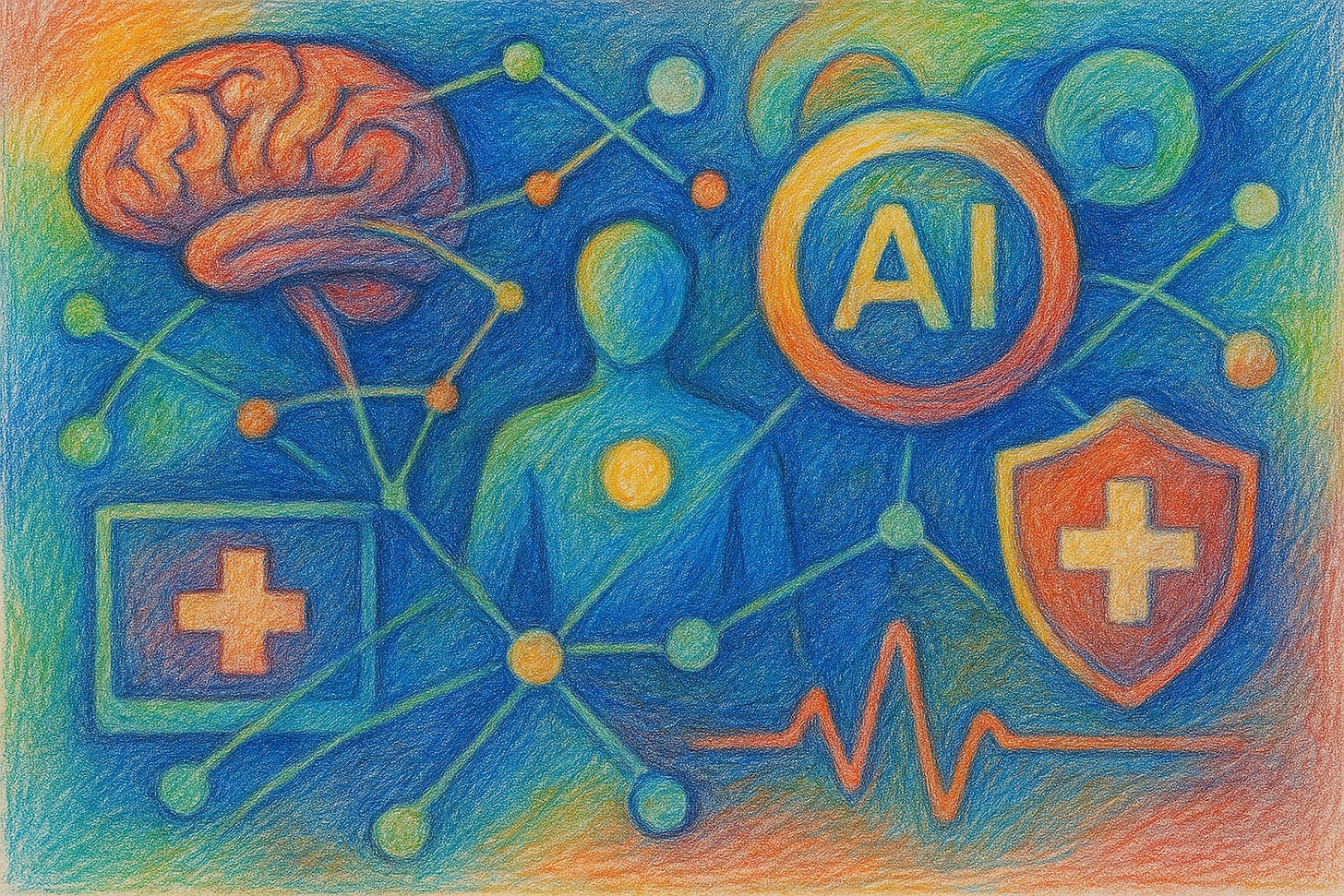Generative AI in Healthcare: Beyond ChatGPT to Clinical Applications
Real clinical applications are reducing physician burnout, catching missed diagnoses, and accelerating life-saving drug development
While most people know generative AI through consumer tools like ChatGPT, we’re witnessing a transformation happening in healthcare that goes far beyond answering patient questions. Generative AI is revolutionizing clinical practice through sophisticated applications that are already changing how we diagnose diseases, develop medications, and deliver patient care. Recent surveys show that 85% of healthcare leaders are now exploring or have adopted generative AI capabilities, marking a pivotal shift from experimental curiosity to practical implementation across hospitals, pharmaceutical companies, and medical practices nationwide.
The Clinical Documentation Revolution: From Burnout to Breakthrough
The most immediate and transformative application being seen is in clinical documentation, where ambient listening technology is fundamentally changing how healthcare providers work with patients. This isn't just advanced dictation—it's intelligent documentation that captures the nuances of patient conversations and transforms them into structured clinical notes in real time.
At Stanford Health Care, physicians using ambient listening technology reported that 96% found it easy to use and 78% said it expedited clinical note taking. The impact on physician wellness has been equally striking. Healthcare systems like Northwell Health report their clinicians now save up to three hours daily in documentation time, directly addressing one of the primary drivers of physician burnout.
The technology works by passively recording patient-provider conversations, then using advanced natural language processing to generate comprehensive SOAP notes, billing codes, and patient instructions. Leading ambient listening platforms can now distinguish friendly conversation from medically relevant information, effectively becoming an invisible assistant that prioritizes pertinent health details. What makes this particularly powerful is the seamless integration with electronic health records—providers can review, edit by voice or typing, and submit notes directly to patient charts within seconds of completing a visit.
The evidence for improved patient care is compelling. Pilots show statistically significant reductions in task load and burnout scores among clinicians using ambient AI scribes, while maintaining safety standards. For patients, this means their healthcare provider can maintain eye contact and focus entirely on the conversation rather than typing notes, fundamentally improving the therapeutic relationship.
Medical Imaging: AI Eyes That See What We Miss
Generative AI is creating what may be considered the most exciting breakthroughs in medical imaging and diagnostics. Unlike traditional AI that simply analyzes existing images, generative models can create synthetic medical images, enhance image quality, and even identify patterns that human radiologists might overlook.
Recent research demonstrates that AI software examining brain scans of stroke patients is now "twice as accurate" as medical professionals at diagnosis, with the added capability of determining the crucial timeframe within which the stroke occurred. This timing information is critical for treatment eligibility and can literally mean the difference between recovery and permanent disability.
Perhaps most remarkably, AI tools can now detect 64% of epilepsy brain lesions that were previously missed by radiologists, finding tiny or obscured abnormalities that evaded human detection. As one researcher described it, "It's like finding one character on five pages of solid black text." The potential for early disease detection extends beyond individual cases—AI systems are identifying disease signatures that are "highly predictive of developing diseases like Alzheimer's, chronic obstructive pulmonary disease, kidney disease and many others," often years before clinical symptoms appear.
Drug Discovery: Accelerating the Path from Lab to Patient
The pharmaceutical industry represents perhaps the most promising frontier for generative AI applications, with the potential to dramatically reduce the traditional 10-year, $2.7 billion drug development timeline. I'm observing remarkable progress in AI-designed molecules that are now advancing through clinical trials at unprecedented rates.
Phase 1 trials for AI-discovered drugs show success rates between 80-90%, significantly higher than historical industry averages of 40-65%. This isn't just theoretical promise—the first entirely AI-discovered and AI-designed drug entered Phase 2 clinical trials in 2023, representing a historic milestone for the industry.
McKinsey estimates that generative AI could generate $60 billion to $110 billion annually in economic value for pharmaceutical and medical product industries, primarily through accelerated compound identification, streamlined development processes, and improved regulatory approval timelines. The technology is particularly powerful in designing large-molecule therapies like biologics and vaccines, where next-generation language models can learn to predict molecular substructures and generate insights about complex molecular chemistry for more targeted therapeutic design.
The clinical trial process itself is being revolutionized. Companies are now creating digital representations of patients based on historical trial data, with AI models forecasting how participants' health would progress without treatment, potentially providing greater confidence in results from smaller trials. The FDA has seen a significant increase in drug application submissions with AI components, with over 500 submissions incorporating AI elements from 2016 to 2023, demonstrating growing regulatory acceptance of AI-assisted drug development.


